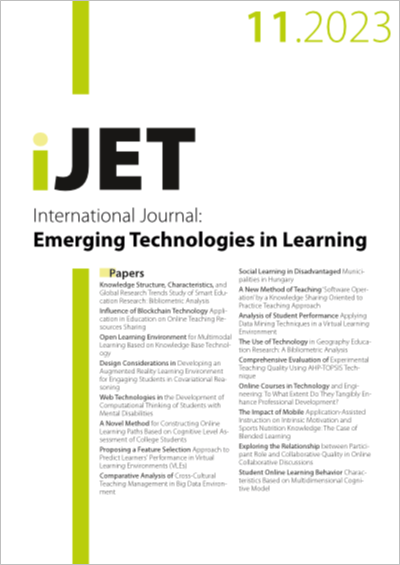A Novel Method for Constructing Online Learning Paths Based on Cognitive Level Assessment of College Students
DOI:
https://doi.org/10.3991/ijet.v18i11.41079Keywords:
college students, cognitive level, online learning, learning path constructionAbstract
The cognitive level of students is a very important factor that should be considered when constructing learning paths, however, it’s not that all students could have sufficient technical skills to participate in learning programs offered by the learning paths, so in real cases, the learning paths can hardly meet the actual learning requirements of each student. To solve this matter, this paper aims to explore a new method for constructing online learning paths based on the cognitive level assessment of college students. At first, this paper introduced a deep learning model into the assessment of college students’ cognitive level, that is, the collected data of the feedback assessment information of student learning was adopted to assess the cognitive level of students, then the paper introduced in detail the structure and principle of the proposed model. After that, this paper proposed a weighted learning method that integrates the learning paths of students with different cognitive levels to ensure the interpretability of the generated learning paths. For a specific student cognitive level on learning paths, the proposed method assigns different weights for learning paths based on history student cognitive level on each node of the learning paths, thereby planning better and easier learning paths for students to achieve their learning goals. At last, experimental results verified the validity of the constructed model and the proposed method.
Downloads
Published
How to Cite
Issue
Section
License
Copyright (c) 2023 Nan Zhang (Submitter); Jun Liang , Yixin Li

This work is licensed under a Creative Commons Attribution 4.0 International License.


